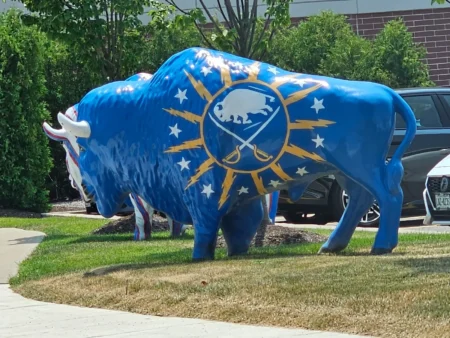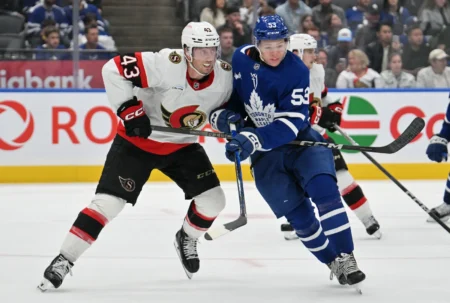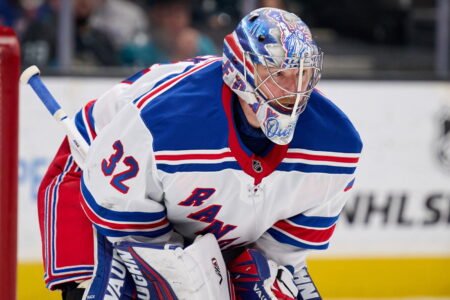As the NHL’s 2025 free-agent frenzy slows down, some teams in the hyper-competitive Atlantic Division haven’t made moves as big as expected.
In Toronto, the biggest move the Maple Leafs made was trading for mid-tier left winger Matias Maccelli. In Buffalo, the Sabres’ biggest additions have been defenseman Michael Kesselring and winger Josh Doan. The Ottawa Senators’ biggest acquisitions have been journeyman center Lars Eller and defenseman Jordan Spence, while the Detroit Red Wings brought in John Gibson.
Not exactly a cast of all-stars, to be sure.
You can point to the Montreal Canadiens trading for top-level blueliner Noah Dobson and the defending Stanley Cup-champion Florida Panthers surprisingly retaining all of stars Brad Marchand, Sam Bennett and Aaron Ekblad as examples of marquee talents arriving in or staying in the Atlantic. Those teams’ splashes certainly stand out among the rest of the Atlantic.
The retooling Boston Bruins were also busy, as they acquired Viktor Arvidsson, Tanner Jeannot, Michael Eyssimont and Jordan Harris, among others. But they were more depth moves than big moves.
But while some might’ve expected even more from the Atlantic’s playoff teams this summer, the truth is that it simply speaks to how good many of those teams are that they didn’t need to bring in new big names – at least, not right away.
Indeed, compare the splashes Atlantic teams made with teams in other NHL divisions, and you’ll see what we’re getting at.
In the Pacific Division, the Anaheim Ducks traded goalie John Gibson, traded for former New York Rangers star winger Chris Kreider and signed veteran center Mikael Granlund. In Los Angeles, the Kings signed a slew of veterans, including defensemen Cody Ceci and Brian Dumoulin, wingers Corey Perry and Joel Armia and goalie Anton Forsberg. The Seattle Kraken traded for forwards Mason Marchment and Frederick Gaudreau and signed defenseman Ryan Lindgren. And the Vegas Golden Knights made a huge splash by acquiring superstar Mitch Marner and re-signing left winger Brandon Saad.
Similarly, in the Metropolitan Division, the Rangers signed first-pair D-man Vladislav Gavrikov, and the New York Islanders signed winger Jonathan Drouin. The Carolina Hurricanes added defenseman K’Andre Miller and right winger Nikolaj Ehlers, while the New Jersey Devils added forwards Connor Brown and Evgenii Dadonov. The Philadelphia Flyers added goalie Dan Vladar and centers Trevor Zegras and Christian Dvorak, while the Pittsburgh Penguins traded for D-man Connor Clifton and signed wingers Anthony Mantha and Justin Brazeau.
Again, not many of those acquisitions can be labeled Grade-A acquisitions, but the number of moves made tells you how many holes needed plugging, in contrast to the holes in most Atlantic teams.
All things considered, the Atlantic Division’s teams didn’t make massive additions because they came into the off-season stocked to the gills in most key areas. The Panthers, Maple Leafs and Lightning made their trades of consequence at the trade deadline, so there’s no impetus for them to swing deals after deals this summer.
While there’s still plenty of time for teams to make additional moves, if the season started today, the Atlantic would still be the league’s most competitive division. That’s why there weren’t as many teams in the Division making big splashes, and that’s why the Atlantic will once again be the NHL’s most competitive division for the foreseeable future.
Get the
latest news and trending stories by following The Hockey News on Google News and by
subscribing to The Hockey News newsletter here. And share your thoughts by commenting below
the article on THN.com.
Read the full article here














